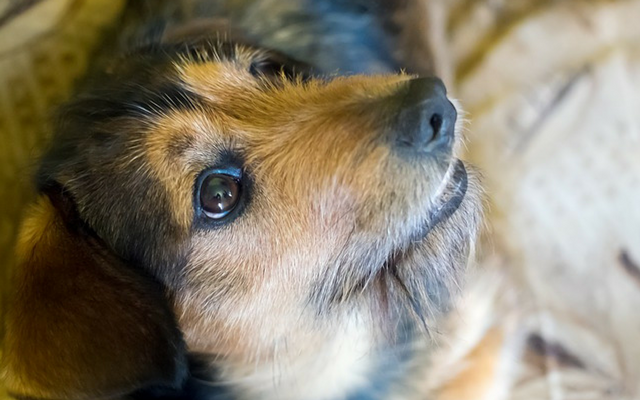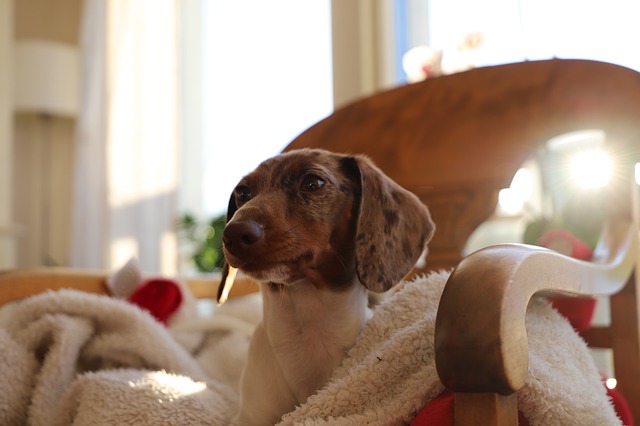The day a rescue dog gets adopted is the day they say “goodbye” to life in the shelter. They say “hello” to people who love them and want to share their comfortable home, and many would assume that it’s the best day of the dog’s life. It’s a day that will change their life forever, but for some pups, the feeling of being overwhelmed may cloud everything else.

Whether you know your new dog’s history or not, there’s no doubt their life has so far been extremely stressful. You wish signing the adoption contract could be the secret ingredient to make it all go away, but being adopted is another stressful experience your dog will have to face. They’ll once again be taken out of a semi-familiar environment and plopped down where everyone and everything is new.
You’re excited to start your life with a new family member, but your dog needs time to adjust to the change. It’s called the decompression stage, and there are specific ways you can ensure a positive experience for your new pup. Here are a few tips to help your newly adopted rescue dog settle in.
1. Keep Calm
Dogs take emotional cues from the humans around them. They’re more perceptive than people give them credit for, and they easily know what others are feeling. If you’re in an excited, exuberant mood, they’ll pick up on your energy. If you’re calm and relaxed, they’ll feel the same.
Your main emotion when you first bring your dog home will probably be excitement, but remember your dog is already overwhelmed with feelings of stress, anxiety, and possibly fear. They have enough feelings of their own to worry about without adding yours to the list. Acting overly excited or offering your dog too much stimulus will be too much for them to handle. Do your dog a favor and keep your emotions in check for the first several days. Try not to get too excited or too loud, and control your temper when your dog is around.
Related: 10 Best Dog Calming Supplements, Treats & Chews (+1 to Avoid)
2. Socialize Slowly
From the moment your dog walks through the door, they’re bombarded with new scents and sights. Everything from the people in your family to the pillows on your sofa will be unfamiliar. Depending on their history, so many new things can be intimidating. Socialization is an essential part of raising a dog, but too much too soon can be a bad thing. Animal Rescue League of Boston says,
“Make sure your dog gets ample ‘quiet time’ so that your dog can acclimate to the new surroundings. Be observant to the dog’s responses and go at the dog’s pace.”
In your dog’s first few days at home, their mind will be working overtime to process all that’s happening. Introducing them to additional new things will send them into system overload. Give them at least a week of transition time before starting with socialization. And when you do start introducing them to new people and experiences, do it one step at a time. Instead of throwing them a welcome home party with all your family and friends, invite individual people over only after the dog has gotten used to you and the other people in your house. Don’t try to do it all at once.

3. Be Predictable
One of the first things you’ll need to do when welcoming your dog home is earn their trust. When their life so far has been a confusing fluster of unreliability, establishing a routine is a good way to set them safely on their feet. They’ll feel more confident and safe in their surroundings when they’re not guessing what new surprise they’ll be faced with next. They’ll learn to rely on your predictability and trust you to keep up their routine.
If you already have a pet with a set way of doing things, founder of Get Your Pet, Angela Marcus, recommends not changing that schedule for the newbie. Upsetting the resident dog will cause unneeded stress in the new dog’s life. Angela says,
“Like anything new, a new dog or puppy can monopolize the attention of you and your family. It’s understandable, but it is important to keep your resident pets in mind. Don’t change the household routine for the new dog; work with them to fit into the current pet’s routine.”
4. Establish Positive Associations
An emotional association is a feeling connected to a specific person, object, or experience. Some associations are positive, like the feeling of security a crate-trained dog gets when they enter their crate, and some are negative, like the anxiety that’s brought up when a dog with motion sickness is asked to get in the car.
It’s your job as your dog’s new guardian to make sure they have as many positive associations about their new life as possible. You want them to feel like their home and all the people, pets, noises, and experiences that come with it are the most wonderful things in the world. You do this by being quick to offer up the things you know your dog loves. Treats and praise are your best options. Dog trainer and owner of Mutt About Town, Maureen Backman, suggests,
“Make it your goal to help your dog form positive associations to everything in his new environment. Have treats and praise at the ready. If you’re taking out the vacuum cleaner for the first time, dole out treats. If the noisy garbage truck drives by, praise and treat.”

5. Forget Your Expectations
The first time you interacted at the shelter, your mind filled with all the wonderful things you and your dog will do together and the bond you’ll share. You imagine how your life will be in the future, and it’s natural to look forward to specific things. It’s important, however, to make sure you don’t develop unfair expectations.
It’s impossible to predict exactly how your relationship with a new dog will play out. You imagine the first few days together to be a whirlwind of fun and heartfelt moments to cement your bond, but that might not happen. The decompression phase is different for every dog, and expectations add tension to an already stressful situation. When things don’t go exactly as you imagined, it’ll be natural to feel disappointed. Your dog will add your frustration onto their own, and it’ll be harder for them to adjust to their new life.
6. Offer Patience
Your dog’s new life starts the moment they leave the shelter, but it will take more than a car ride home for them to feel completely comfortable. In general, newly adopted dogs don’t begin to show their true personalities until 6-8 weeks after being adopted. They spend the first few days decompressing and the next few weeks learning about their new lives. They won’t feel comfortable enough to fully relax until they trust the people around them and feel safe in their new environment.
Trust is something your dog will have to come to on their own. You can’t rush them or force them; all you can do is wait while providing them with the love and support they need. The timeline is different for every dog, and they’ll benefit most when they’re given time and space. Instead of always being the one to initiate interaction, let your dog come to you. Let them do things at their own pace to secure a strong foundation for your future friendship.
 Toledo, United States.
Toledo, United States.